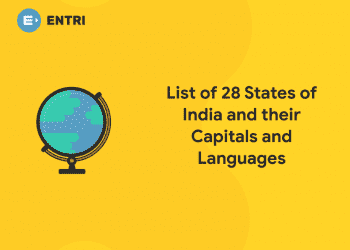Table of Contents
The International Day Against Illicit Trafficking in Cultural Property is observed every year on November 14 to raise awareness about the illegal trade and theft of cultural heritage. This day serves as a global reminder of the need to protect artworks, monuments, manuscripts, and archaeological treasures that form the foundation of our shared human history. Cultural property holds immense historical, artistic, and spiritual value, and its unlawful trade not only erases traces of civilizations but also weakens national identity and collective memory.
The day was proclaimed by UNESCO to encourage global cooperation in preserving cultural heritage and preventing illicit trafficking. Through international agreements like the 1970 UNESCO Convention, countries work together to stop the illegal export, import, and sale of cultural objects. By promoting ethical collecting practices, stricter laws, and awareness among individuals, this observance aims to ensure that cultural treasures remain where they belong — within their rightful communities and nations.
International Day against Illicit Trafficking in Cultural Property 2025 Date – November 14
In this article readers can get a glimpse on
- History and Objective of International Day against Illicit Trafficking in Cultural Property
- International Day against Illicit Trafficking in Cultural Property Theme 2025
- International Day against Illicit Trafficking in Cultural Property Quiz
History and Objective of International Day against Illicit Trafficking in Cultural Property
1: Who was the first woman President of India?
The International Day against Illicit Trafficking in Cultural Property is observed every year on November 14. It was established by UNESCO in 2020 to raise awareness about the illegal trade of cultural artifacts and heritage. This global observance highlights the growing threat to cultural heritage caused by theft, looting, and smuggling of artifacts, especially in conflict zones. It also draws attention to the importance of preserving the cultural identity and history of communities worldwide. The day reminds nations to strengthen cooperation in protecting cultural property through education, laws, and responsible practices.
The main objective of this observance is to promote the safeguarding of cultural heritage and prevent its illegal circulation. It encourages countries to adopt measures outlined in international treaties such as the 1970 UNESCO Convention against the illicit trafficking of cultural property. The day aims to build awareness among museums, collectors, and the general public about the legal and ethical responsibilities involved in cultural exchanges. It also focuses on returning stolen cultural items to their rightful owners and protecting sites from looting. Ultimately, this observance promotes respect for cultural diversity and shared global heritage.
Free UPSKILLING Courses!
Take your first step toward mastering in-demand skills, acing interviews, and securing top-tier jobs with Entri's free upskilling courses.
Start Learning!International Day against Illicit Trafficking in Cultural Property Theme 2025
The International Day against Illicit Trafficking in Cultural Property, observed annually on November 14th, does not always have a single, highly publicized annual theme like some other UN days.
Instead, the focus and messaging tend to revolve around the core purpose of the day and its broader ongoing initiatives, often related to the anniversary of the 1970 UNESCO Convention.
For recent and ongoing years, the focus has been on:
- Raising global awareness of the severity of the crime and its impact on culture, identity, and history.
- Strengthening international cooperation and the effective implementation of the 1970 UNESCO Convention on the fight against illicit trafficking.
- Promoting dialogue on the return and restitution of cultural property to its countries of origin.
- The role of all stakeholders, including the art market and the public, in exercising due diligence and fighting this crime.
A notable development in recent campaigns is the promotion of the Virtual Museum of Stolen Cultural Objects, which was launched by UNESCO in 2025 as a new tool for education and public awareness.
International Day against Illicit Trafficking in Cultural Property Quiz 2025
A) UNESCO
B) UNICEF
C) WHO
3. In what year was the International Day Against Illicit Trafficking in Cultural Property established by UNESCO?
A) 2017
B) 2019
C) 2021
A) Europol
B) Interpol
C) CIA
5. The 1970 UNESCO Convention focuses on which of the following?
A) Protection of natural resources
B) Prohibition of trafficking in cultural property
C) Promotion of international trade
A) It strengthens local culture
B) It causes loss of national heritage
C) It increases tourism
A) Artifacts and antiquities
B) Modern technology
C) Industrial machinery
A) Africa and the Middle East
B) Europe and North America
C) Antarctica and Asia
A) It supports commercial art trade
B) It preserves shared history and identity
C) It promotes urban development
Want More Engaging Questions?
Download our FREE PDF packed with insightful quiz questions to test your knowledge!
🔽 Click below to get your free copy now! 🔽
International Day against Illicit Trafficking in Cultural Property Quiz 2025 PDF
The International Day Against Illicit Trafficking in Cultural Property reminds the world that cultural heritage is a shared responsibility. Protecting art, artifacts, and historical treasures ensures that the stories and identities of civilizations endure. Illicit trafficking not only robs communities of their cultural legacy but also fuels crime and exploitation. Every effort to stop this illegal trade strengthens global respect for cultural diversity and human creativity.
By working together through education, law enforcement, and international cooperation, countries can build a safer future for cultural preservation. UNESCO, Interpol, and heritage organizations continue to lead these efforts, but public awareness plays an equally vital role. Each person can help by refusing to buy unverified artifacts and supporting ethical heritage protection. Preserving the past is not only about history — it is about protecting humanity’s collective soul for generations to come.
Free UPSKILLING Courses!
Take your first step toward mastering in-demand skills, acing interviews, and securing top-tier jobs with Entri's free upskilling courses.
Start Learning!Frequently Asked Questions
What is the International Day Against Illicit Trafficking in Cultural Property?
The International Day Against Illicit Trafficking in Cultural Property is observed on November 14 each year. It aims to raise awareness about the theft and illegal trade of cultural heritage. The day emphasizes the need to protect artifacts, artworks, and monuments from being stolen or sold unlawfully. It was established by UNESCO to promote stronger global cooperation in cultural protection. This day reminds nations of their shared duty to safeguard heritage for future generations.
Why was this international day created?
This day was created to address the growing global problem of cultural property theft and smuggling. Many ancient artifacts and artworks are illegally traded in black markets. Such acts destroy historical evidence and cultural identity. UNESCO introduced this observance to encourage stronger laws, tracking systems, and ethical collecting. The goal is to ensure that cultural heritage remains within its rightful communities.
What is considered cultural property?
Cultural property includes objects of artistic, historical, or archaeological importance. Examples are paintings, sculptures, manuscripts, ancient coins, and religious relics. These items reflect a society’s values, beliefs, and traditions. They help future generations understand their cultural evolution. Protecting them ensures that human history remains complete and respected.
What causes illicit trafficking in cultural property?
Illicit trafficking often results from conflict, war, poverty, and weak legal enforcement. Artifacts are stolen from museums, archaeological sites, and temples. They are then sold illegally in global art markets. High demand from collectors fuels this illegal trade. Strengthening national and international cooperation can help stop these activities.
How does illicit trafficking affect societies?
The loss of cultural property weakens national identity and cultural pride. Communities lose physical links to their history and traditions. It also damages tourism and the local economy. Illicit trade can fund criminal networks and armed groups. Preserving cultural heritage strengthens peace and social unity.
What role does UNESCO play in combating illicit trafficking?
UNESCO provides international guidelines and conventions to protect cultural heritage. Its 1970 Convention sets rules against illegal export and import of cultural property. UNESCO works with countries to strengthen museum security and heritage laws. It also helps return stolen artifacts to their rightful owners. Through awareness campaigns, it promotes respect for cultural diversity.
What is the 1970 UNESCO Convention about?
The 1970 Convention is a key international treaty to prevent illicit trade in cultural property. It encourages countries to ban the import and export of stolen cultural objects. Member states must keep detailed inventories and report illegal activities. The Convention also supports the return of stolen items to their origin countries. It promotes ethical practices among museums, collectors, and dealers.
How does Interpol assist in protecting cultural property?
Interpol works closely with UNESCO and national police to track stolen artifacts. It maintains a global database of missing cultural objects. Law enforcement agencies use this database to identify and recover items. Interpol also trains officers to handle cultural crimes effectively. Their cooperation ensures better cross-border investigations and artifact recovery.
What can individuals do to help prevent illicit trafficking?
Individuals can avoid purchasing cultural items without verified provenance. They should report suspicious artifacts being sold online or in markets. Supporting museums and legal cultural institutions helps promote awareness. People can also educate others about the value of cultural heritage. Responsible behavior by citizens can reduce illegal demand.
Why is protecting cultural heritage important for future generations?
Cultural heritage connects people to their roots and shared human history. It helps societies preserve their stories, art, and values. Losing it means losing identity and collective memory. By protecting it, we pass on knowledge, creativity, and tradition to future generations. Safeguarding heritage promotes unity, respect, and understanding among cultures worldwide.













